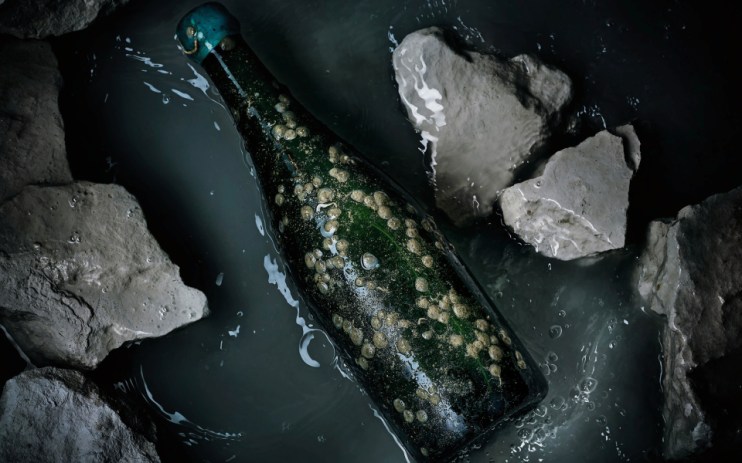Making bubbles under the sea: Is this the future of fizz?

English wine has boldly gone somewhere it has never been before: under the sea. The idea of under-water aging has been trialled across the world since 2010, when some Veuve Clicquot dating from the early 1800s was found in a shipwreck, proclaimed delicious, and sold at a premium.
However, Hampshire’s Exton Park is now the first and only English sparkling wine to be aged on the lees under the sea, something Champagne would never be allowed to do.
Under French law, Champagne can only leave wineries after disgorgement, the process by which the lees (or dead yeast cells that create the alcohol) are removed. “We are not constrained by the same regulations that the Champagne Houses are,” says Exton Park’s director Corinne Seely, so “the under-the-sea project is an opportunity for us to really push the boundaries”.
Aging under the sea means natural temperature regulation and light control. Bottles are usually kept at 10-14 degrees and in the dark, much like a well-maintained cellar, but at 60 metres below sea level the pressure inside and outside the bottle is the same and there is also perpetual movement. “What is going to be so interesting,” says Seely “is the effect that the constant and gentle movement of the sea has on the aging of the wines.”
Exton Park’s soils are mainly chalk and with the romantic notion of being at one with the sea, Seely muses that “chalk comes from the sea and I wanted to see what the sea would bring to the wine”.
Some believe under-water aging to be purely a marketing ploy and Denis Drouin of sea-aging company Amphoris admits to some cynical requests.
“Every week wine producers ask that we glue shells onto the bottles” Drouin says, adding “we don’t do that”. However, in blind tasting trails it has overwhelmingly been found that this kind of aging does create different characteristics in the wines, with people reporting fresher, brighter fruit and floral flavours, usually reduced during longer aging processes.
Amphoris have been experimenting with their process of immersion and recovery and Drouin says that with 100 different wines, it will work 80 per cent of the time: “Wines age differently under the water. Some work well and some don’t”.
Luckily, this time it appears to have been a success and Seely is delighted with the results. At a tasting comparing Exton Park’s 2014 Blanc de Blanc aged both above and below the sea there was a significant difference. “It’s younger, it’s fresher” says Seely of the ‘60 Below’ bottle. “My conclusion: it is perfection”.
This wine, the first of its kind, will have undergone an impressive seven years aging on the lees including a full 12 months off the coast of Brittany.
It will be a little while before the public can try it, however, with a limited edition of 180 bottles of ‘60 Below’ being released in October through The Vault, Exton Park’s wine club, ahead of a more general release through the winery’s website, availability allowing.